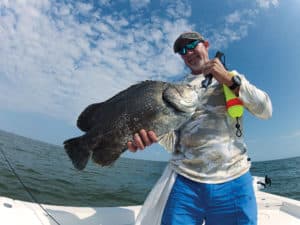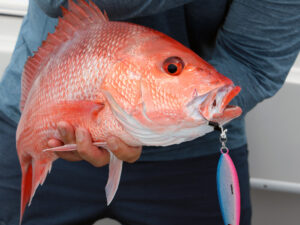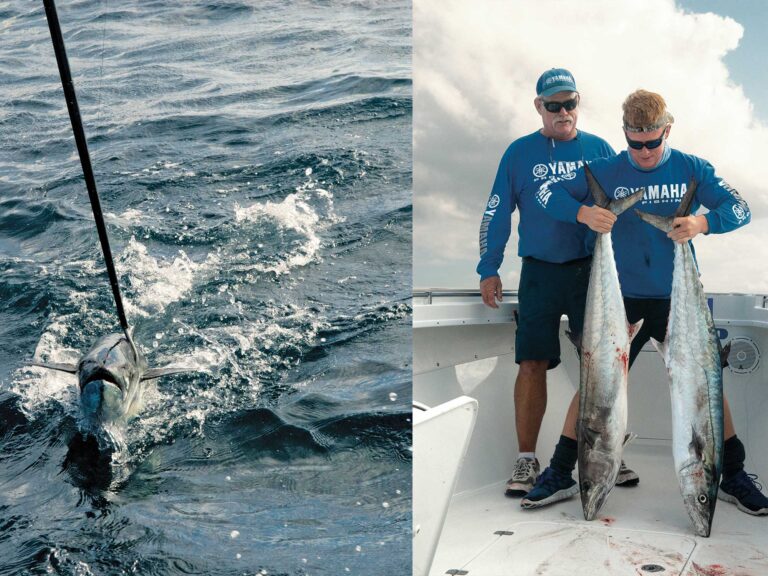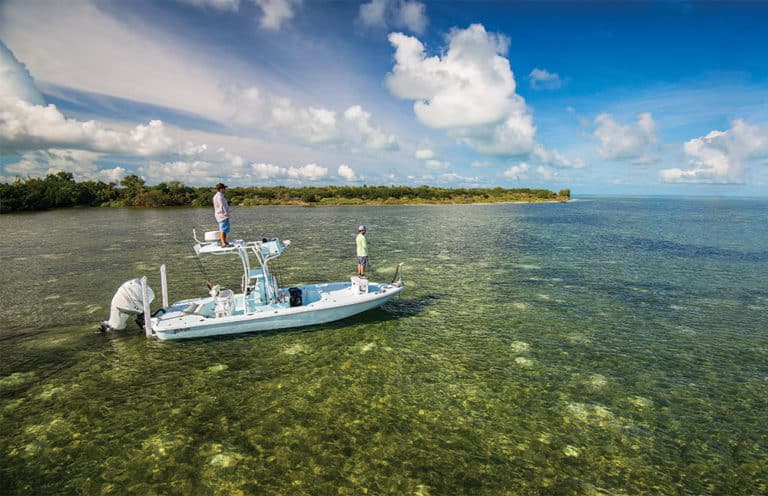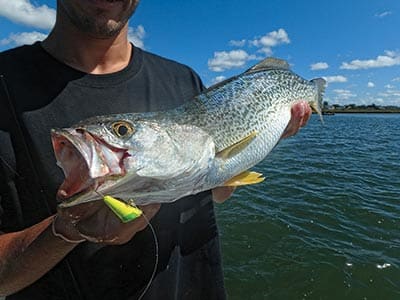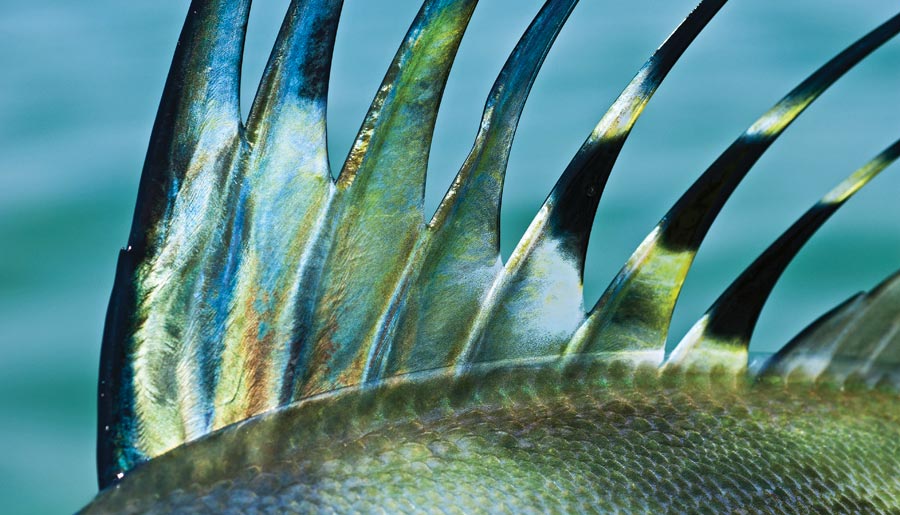
Roosterfish are quickly moving to the top of the must-catch list for saltwater fly-fishing fanatics. They pull hard when hooked, pummel flies, live in a spectacular habitat and act even more bizarre then they look. Most importantly, roosters are a true challenge of casting skills, patience and composure.
To explain rooster encounters, it helps to define other types of saltwater fly-fishing. Flats-fishing appeals to stealthy, keen-eyed hunters who can stay composed when the target approaches. Offshore fly-fishing requires teamwork and attracts those who desire to do battle with giant billfish on oversize tackle.
East Coast striper fishing is for anglers who find glory in screaming gulls and spraying bait in extreme weather. Roosterfishing is about throwing every known cast at a fish that’s so fast it can live in three ZIP codes at once while you’re trying not to fall in the baitwell of a rolling panga. This is a fish for nuts who like playing Whac-A-Mole at the state fair. Flailing, swearing and laughing are inevitable.
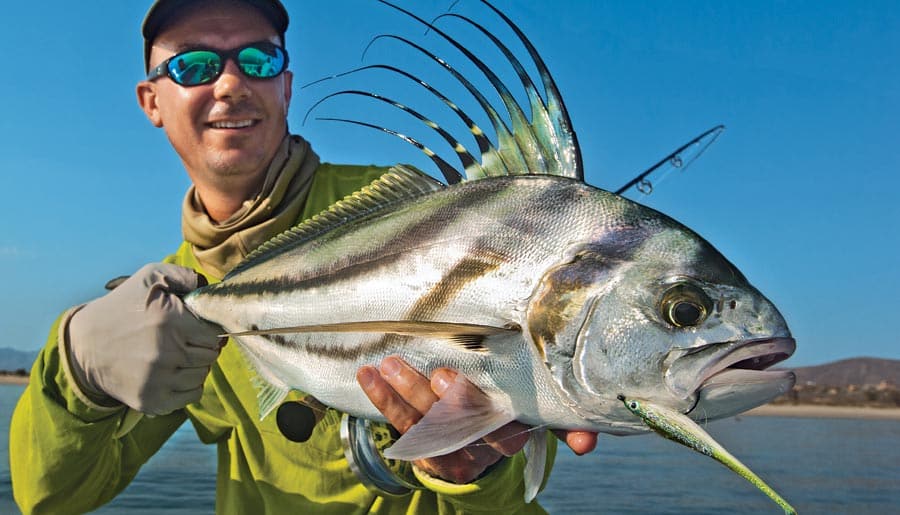
Tracking Trophies
Some of the biggest roosterfish can be found along the rocky coasts of Panama and Costa Rica, but Mexico’s Sea of Cortez has become the primo chicken coop.
Roosters are best known for cruising along white, sandy beaches in search of bait like sardina. Unlike those of tarpon or bonefish, their black- and gray-striped bodies stand out dramatically against such settings.
They also frequent rocky points and beaches that have stretches of live bottom that hold more bait. Some of the biggest roosters I have ever seen were spotted busting bait over structure in 30 feet of water. One key to locating these larger specimens is to find forage areas that give the fish access to deep water.
Gary Bulla, one of Baja California’s premier rooster outfitters, prefers the months of April, May and June for targeting trophies. The shallows remain cool and still hold plenty of healthy sardina. His favorite big-fish habitat ranges from about 15 miles south of Los Muertos, in an area called Ranchito, all the way up to the waters surrounding Cerralvo Island and Baja beaches across from Cerralvo up to Las Pillar.
Punta Arenas is a classic ambush spot. It has miles of white, sandy beaches that drop dramatically to extremely deep water. Dorado and yellowfin tuna have been spotted making quick raids from the depths along this beach. At the end of spring, the big fish leave for deeper, cooler water, and the schools of smaller fish cruising the beaches tend to break up. From late summer into November, juvenile roosters will stay with the bait, feeding individually or in much smaller pods. These roosters are still bountiful enough to target, plenty challenging and great training for the big boys.
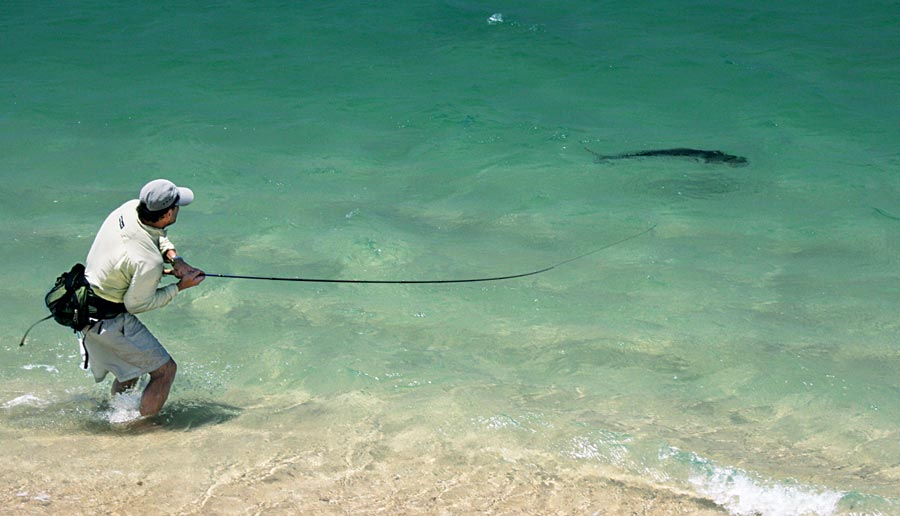
Gearing Up
For larger fish, the preferred flies are generally black-over-white, olive-over-white, tan-over-white or gray-over-white variations of wide-bodied bucktail or ultra-hair baitfish. These are pretty much like those used to imitate juvenile bunker, only the eyes are a bit bigger.
The average size of sardina varies, so it’s wise to tie at least two different sizes, from 2½ to 4 inches long. For those targeting chicken roosters, Clouser Minnows and Crease Flies are good choices.
In the fall, when the bait and roosters are small, you can scale down the tackle somewhat. Outfits in the 8- to 9-weight range are a good match for these fish. Lines are kind of a personal preference. I prefer intermediate lines because sometimes letting the fly drop when a feeding rooster disappears will draw a strike. However, since roosters do in fact eat poppers, floating lines have a purpose as well. As an added bonus, these are easier to pick up and use to make another cast when the fish are moving — and they are always moving.
Keep in mind that it’s better to pick a line for its ability to load the rod and cast quickly than for its floating or sinking capability. Before a trip, it is important to test the compatibility of a new outfit and practice with it. Don’t ruin an outing by choosing an kit that won’t load quickly and turn over a bulky fly presented on a 12-foot-long 20-pound leader.
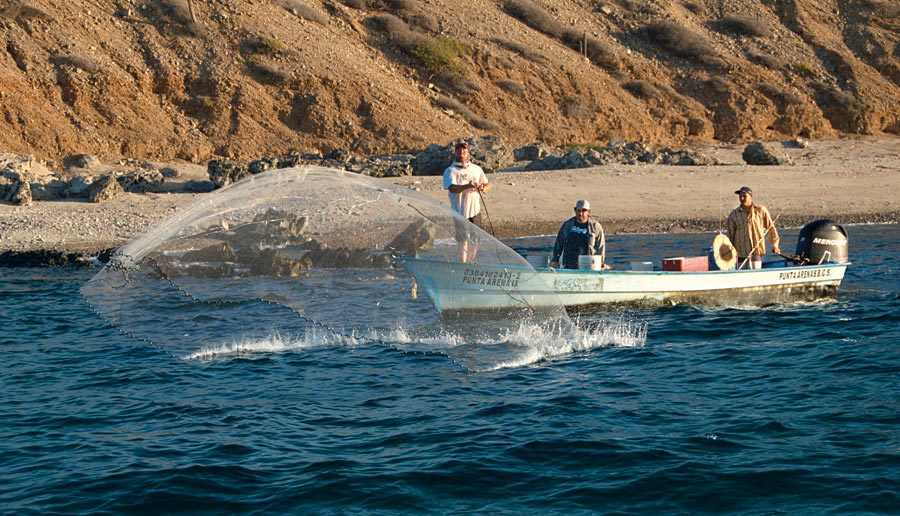
Casting and Stripping
To bag roosters — especially big ones — you’ve got to be able to make several types of casts. A guide can’t reposition the boat to compensate for wind or sun, and roosters truly are schizophrenic. They will change directions three times during one cast and then pop up on the other side of the boat as the fly hits the water!
Less skilled anglers and excessive false casters will still catch lots of fish, such as jacks and ladyfish, while landing flies in the jet trails of marauding roosters.
Water hauls are essential for this snapshooting style of fishing. Effective water hauls pop bulky flies out of the salt and prevent you from having to waste seconds stripping back the line to recast.
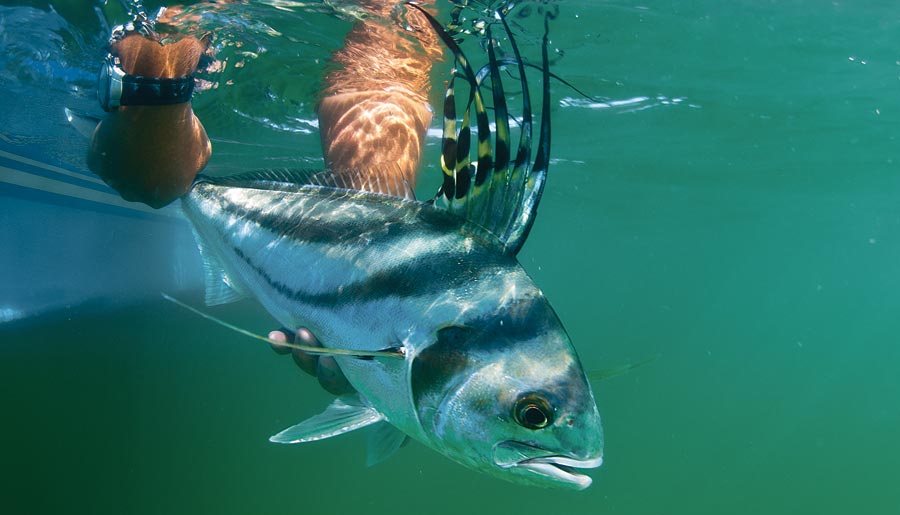
The extra surface tension created by pulling the line off the water loads the rod and feeds the line when it stops on the backcast. This technique also allows you to shoot a backcast to a fish without a false cast.
Perfectly timed water hauls take a lot of the workload away from the casting arm by giving the line hand a job. Many anglers double-haul but don’t water-haul, and they miss out on the amazing power boost that this foot-long motion creates. The key to this cast is timing. Your stripping hand does not move down until the leader is about to leave the water. This lets you release the fly from the water with more line out, and it turbo-loads the rod.
The double haul is the second most important casting technique for Baja roosterfishing. This stroke is a major power generator that makes quick, long casts possible. It also lets you reposition while keeping the fly in the air as a fish changes directions. It is essential for making long casts when surf-fishing for beach-running roosters, as can be observed in the fly-fishing video Running Down the Man.
Roosters want an active target, so you can’t just stand there and admire the cast. You’ve got to move the fly! Using the New England-style hand-over-hand strip, with the rod tucked under one arm, really can increase your hookups. The rod can be tucked under your arm as the fly is falling. It’s also possible to start stripping before the line hits the water. This works well when you need to straighten out a floppy presentation.
Some side-to-side swimming action can be imparted to the fly if you actually turn your body slightly left and right while stripping. Tipping the rod up to set the hook makes it harder to whiff hookups and is really effective for strip strikes. It is easier to change the speed and cadence of a retrieve with a hand-over-hand stripping technique. This method takes practice, but it’s well worth the effort to learn.
It’s more important to be able to control the fly by not dropping the line while presenting the pattern. Getting the line under your stripping finger as soon as the fly hits the water (if not before) is critical. The few seconds needed to grab the line with your stripping hand and then get it under your stripping finger may be OK when targeting stripers or happy bonefish, but definitely not roosters. To be clear, the fly does not have to be stripped at warp speed, but it has to be under control at warp speed.
You must also keep this same level of control while presenting with a backcast. Being able to do all this while watching the fish and not the cast is even more important! Guides call this the “fishing position,” and it doesn’t hurt to practice it at home, since Mother Nature always throws curveballs.
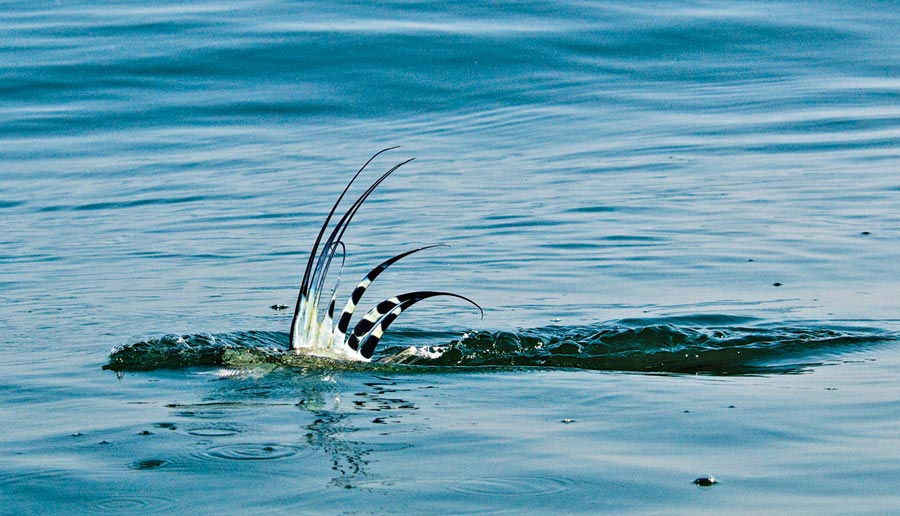
Getting Their Interest
Using live bait is essential to keeping roosters active and within casting range. The captains in this region have mastered the art of just enough. They are careful to attract fish without overfeeding them. Even though the captains pay a little extra to have a bait boat follow the group, a baitwell full of sardina still has to last for several hours.
When they pull into a section of water known to hold fish, the guides will toss several small scoops of bait around the boat. The reaction is immediate. It is really easy to get caught up in this multispecies feeding frenzy, and I often do.
However, to catch a rooster, it is better to resist the overwhelming urge to cast at everything and wait for a shot. Panicking sardina will normally attract at least a half-dozen species, often more. Most of these fish will instantly trash flies and leaders and temporarily take anglers out of the game. Many times I have watched roosters streak past my feet as I’ve grappled with a feisty jack.
During the whole crazy drift, the guides never stop moving. Angler activity may be frantic, but the guides are cool. They smoothly scoop bait, toss it, land a fish, inspect the fly and repeat. They do all this while constantly scanning and listening for roosters. With highly tuned senses, these guides are able to identify a fish by its splash and how it fights.
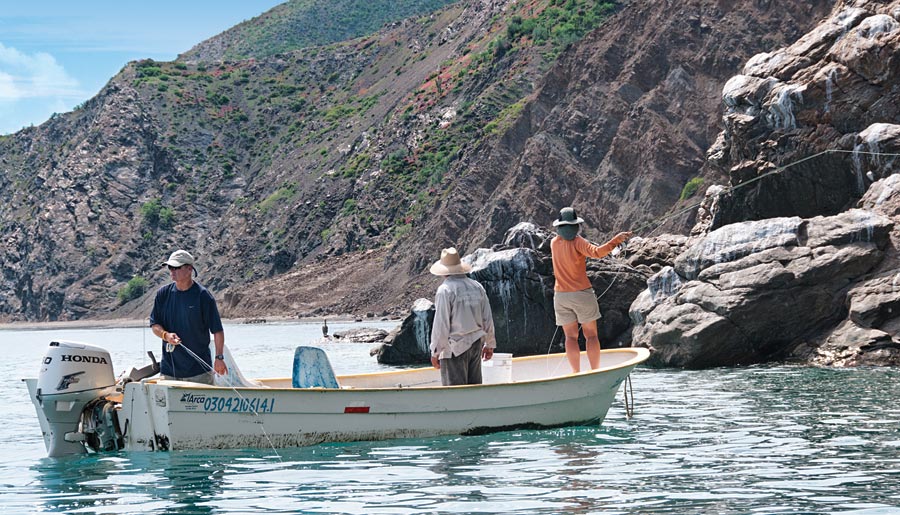
When chasing bait across the surface, a rooster’s distinctive dorsal comb makes a hissing sound in the water, similar to the sound a fly line makes when attached to one. Its explosive crater seems like overkill compared to the tiny bait being inhaled. All roosters, especially big ones, are really difficult to hook despite their aggressive behavior, which makes them appear fearless. They come in, beat the tar out of everything and then disappear.
When roosterfishing in September and October, anglers tend not to stay in one spot for long. The fish seem to wise up and fill up on free food. Keeping drifts short and sweet helps keep spots fresh for the season.
Bulla, an area roosterfish expert, thinks all sizes of roosters get wise to a fly quickly in a raid. The bites come early, even if the fish do stick around. Guides will make a few passes through a productive-looking section and move on. Some drift on runs parallel to the beach, while others move off the beach, depending on wind and current. With so many other fishing options in the fall, such as yellowfin and dorado, guides put less emphasis on spending time in shallow water for smaller roosters. This type of fishing is outrageously fun and likely to add at least a dozen new species to the fly list, but it probably won’t produce trophy fish.
Big roosters require a refined game. Patience and perseverance become just as important as casting. Roosters don’t show spookiness like bonefish or tarpon do. Anglers can’t see them acting squirrelly while cruising the flats because they just won’t show. Bigger fish will hold in the cool safety of the drops and wait until the world above gets quiet. They don’t stay up as long or feed as close to the boat as their smaller kin.
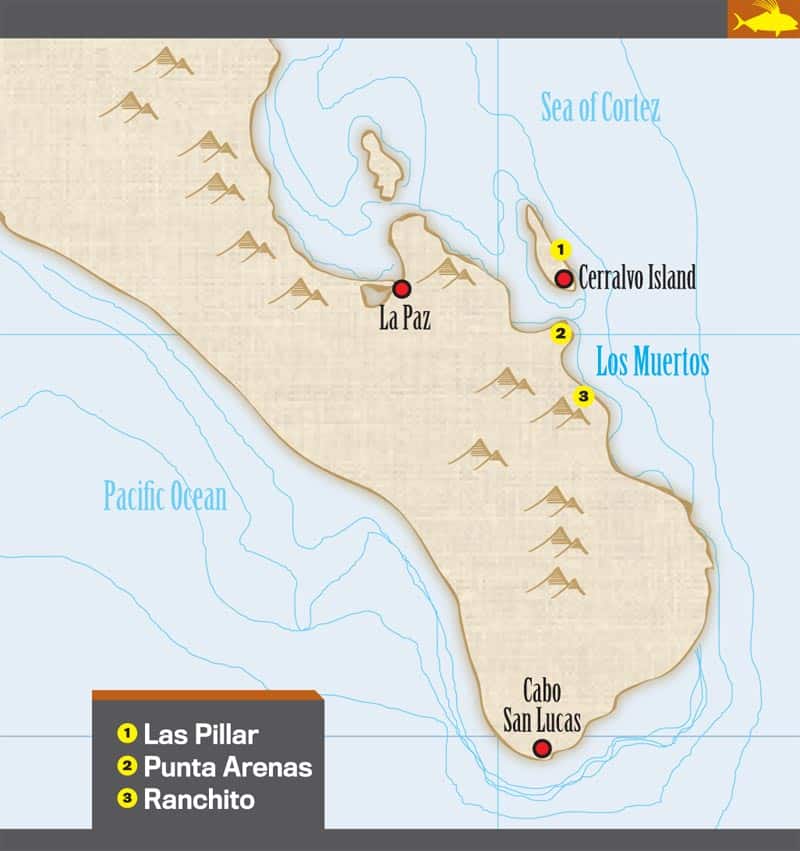
Some of Bulla’s best big-fish encounters have occurred on drifts with the motors off long after other boats have disappeared. Bulla has been blasted out of his hypnotic state of casting and daydreaming by 50-pound torpedoes. He has had the most hookups when packs of a half-dozen big fish have made shallow-water raids. Competition seems to make them bolder. During May, June and July, when big roosters venture into the cooler shallows, they make a strong first impression. They are just as agile as, with twice the shoulders of, smaller fish.
I am an ultra-competitive person but don’t care that I have not caught a trophy rooster yet. Their eccentric and unpredictable nature definitely gives big roosters the upper hand against anglers, which is precisely what makes them such an addictive fish to target, and I love Baja. The quest for a grande is just an excuse to return to one of the most spectacular fishing holes in the world.



